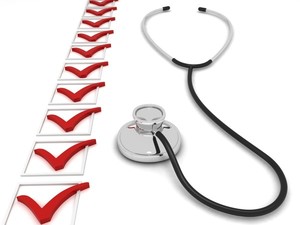Extrapolation* is already a well-established and accepted scientific and regulatory principle, according to members of the European Medicines Agency's (EMA) Biosimilar Medicinal Products Working Party (BMWP) [1].
In the case of originator biologicals undergoing manufacturing changes clinical data are typically generated in one indication and, taking into account the overall information gained from the comparability exercise, may then be extrapolated to other indications.
This is also the case when originator biologicals introduce a subcutaneous formulation of a previously intravenously applied drug. Despite the formulation and bioavailability of the subcutaneous product being different, it is usually sufficient to carry out just one clinical study and extrapolate the approval to all clinical indications approved for the intravenous product.
For biosimilars, extrapolation of efficacy and safety data from one indication to another may be considered if biosimilarity to the reference product has been shown by a comprehensive comparability programme. If the relevant mechanism of action of the active substance and the target receptor(s) involved in the tested and in the extrapolated indication(s) are the same, extrapolation is usually possible.
In cases where the mode of action is complex and involves multiple receptors or binding sites, additional data [e.g. in vitro functional tests or in vivo pharmacodynamic studies reflecting the respective pharmacological action(s)] are necessary in order to provide further reassurance that the biosimilar and the reference product will behave alike, also in the extrapolated indications.
Immunogenicity, on the other hand, is related to multiple factors, e.g. route of administration, and therefore, extrapolation of immunogenicity data is not self-evident and always requires convincing justification.
*Extrapolation involves extending and applying the data from clinical studies regarding one medical condition to another medical condition.
Disclaimer
The authors of the research paper [1] declared that they are members or experts of the European Medicines Agency's (EMA) Biosimilar Medicinal Products Working Party (BMWP). This paper [1] represents solely the views of the authors and should not be understood or quoted as being made on behalf of or reflecting the position of EMA or its committees.
Conflict of interest
The authors of the research paper [1] declared that there were no conflicts of interest.
Editor’s comment
If you are interested in contributing a research paper in a similar area to GaBI Journal, please send us your submission here.
If you would like to receive a PDF copy* of the Weise et al. paper [1], please send us an email.
*For profit organizations subjected to a fee
Related articles
Extrapolation for biosimilars
Biosimilars: similar but not identical
Extrapolation of indications in biosimilars: filgrastim
Extrapolation of indications in biosimilars: epoetin
Extrapolation of indications in biosimilars: infliximab
Reference
1. Weise M, Kurki P, Wolff-Holz E, Bielsky MC, Schneider CK. Biosimilars: the science of extrapolation. Blood. 2014 Oct 8. pii: blood-2014-06-583617. [Epub ahead of print]
Permission granted to reproduce for personal and non-commercial use only. All other reproduction, copy or reprinting of all or part of any ‘Content’ found on this website is strictly prohibited without the prior consent of the publisher. Contact the publisher to obtain permission before redistributing.
Copyright – Unless otherwise stated all contents of this website are © 2014 Pro PharmaCommunications International. All Rights Reserved.








 0
0











Post your comment